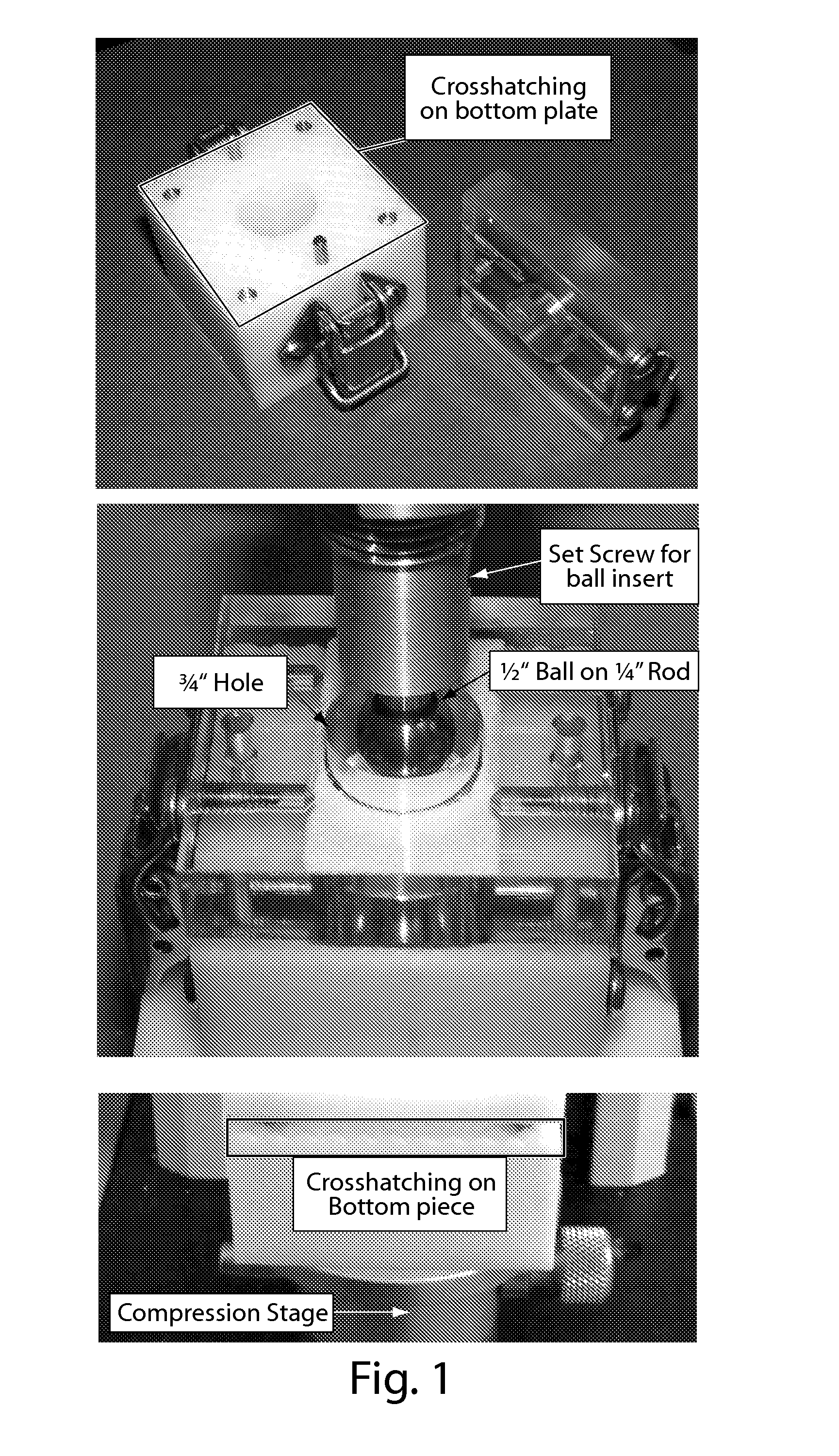Implantable materials for bone repair
- Summary
- Abstract
- Description
- Claims
- Application Information
AI Technical Summary
Benefits of technology
Problems solved by technology
Method used
Image
Examples
example 1
Preparation of Fiber-Reinforced Implantable Materials
[0068]A fiber reinforced putty and fiber reinforced Flex (lyophilized putty) were prepared using methods analogous to those described in PCT Publication No. WO2007070681.
[0069]Preparation of Putty
[0070]A putty material containing about 51.9% (w / w) anorganic bone mineral particles (ABM, a natural microporous, xenogenic bone material also known as OsteoGraf®-N 300); about 1.5% (w / w) sodium carboxymethyl cellulose; about 6.98% (w / w) glycerol; and about 39.57% (w / w) water was prepared mixing the water, glycerol, and sodium carboxymethyl cellulose to form a hydrogel, and mixing the ABM particles with the hydrogel to form a putty. The hydrogel / putty is optionally subjected to a vacuum to remove any air bubbles formed during mixing. The ABM particles optionally include P-15 peptide (see U.S. Pat. No. 5,635,482) bound to their surface (sold as PEPGEN P-15® by Dentsply Tulsa Dental Specialties).
[0071]Preparation of Fiber-Reinforced Putty
[0...
example 2
The Modified Ball Punch Deformation Test
[0076]The fiber reinforced Flex can improve ease of handling and implantation by a surgeon in comparison to fiberless formulations. The fiber reinforced materials can also reduce particle migration post implantation.
[0077]A tensile test, which is the standard mechanical test for current Flex product, cannot properly test the material in a real-world scenario since the product is rarely pulled apart. Rather, during implantation of the lyophilized formulations, manual pressure is applied to strips of Flex in a puncturing motion, not pulling. To ascertain the performance of the product under realistic surgical conditions, an ideal test would also be performed on both dry and wetted (using various techniques and fluids) Flex samples.
[0078]To assess whether a fiber reinforced Flex can better withstand manual puncturing motion, a new testing method, the Modified Ball Punch Deformation Test (BPD test), was developed. The BPD test mimics real-world ha...
example 3
Effect of Silk Fiber Length and Concentration on Mechanical Properties for Fiber Reinforced Flex
[0082]The purpose of the following study was to understand the effect of silk fiber length and concentration on mechanical properties for silk fiber reinforced Flex (SFR Flex) samples.
[0083]SFR Flex samples were prepared using the methods described in Example 1. The fibers used for this study were roving silk fiber (textile grade) cut to ½″, ⅜″ and ¼″ lengths. The samples were subjected to BPD testing as described in Example 2. The results are tabulated below in Table 2.
TABLE 2FiberFiberLoad atLengthPercentageTestingFailure(in)(%)Environment(N)NA0Dry13.53Wet0.352½1.0Dry55.85Wet20.7940.5Dry42.13Wet6.2940.25Dry32.2Wet2.395⅜1.0Dry63.09Wet26.9810.5Dry39.83Wet10.4970.25Dry26.07Wet5.435¼1.0Dry50.49Wet9.4570.5Dry22.12Wet3.6580.25Dry21.43Wet2.753
[0084]Results and Discussion:
[0085]A steady decrease in LAF can be observed as fiber content decreases, the lowest LAF values generally being observed in...
PUM
| Property | Measurement | Unit |
|---|---|---|
| Length | aaaaa | aaaaa |
| Length | aaaaa | aaaaa |
| Fraction | aaaaa | aaaaa |
Abstract
Description
Claims
Application Information
 Login to View More
Login to View More - R&D
- Intellectual Property
- Life Sciences
- Materials
- Tech Scout
- Unparalleled Data Quality
- Higher Quality Content
- 60% Fewer Hallucinations
Browse by: Latest US Patents, China's latest patents, Technical Efficacy Thesaurus, Application Domain, Technology Topic, Popular Technical Reports.
© 2025 PatSnap. All rights reserved.Legal|Privacy policy|Modern Slavery Act Transparency Statement|Sitemap|About US| Contact US: help@patsnap.com



